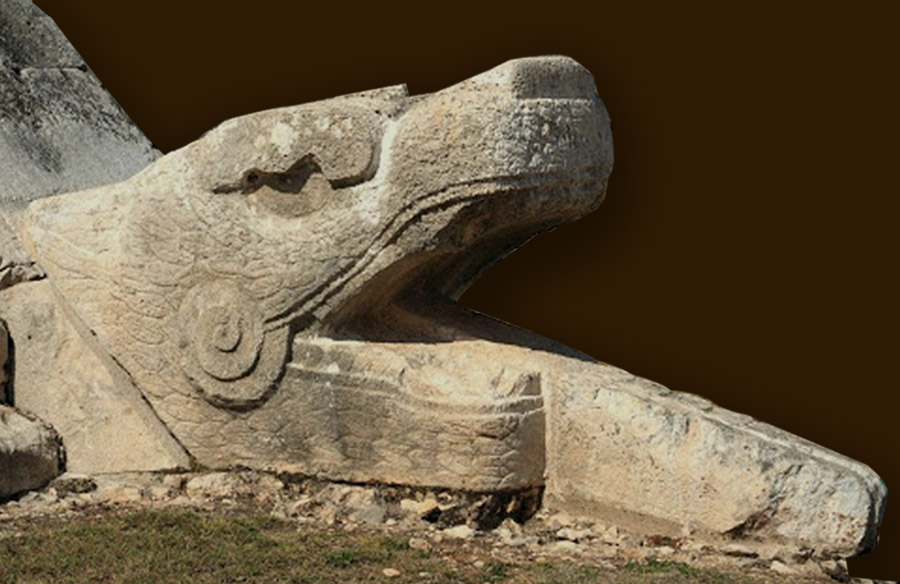The ancient world has been a mystery to researchers and spectators for centuries, and we have not yet been able to explore all its secrets. Ancient architecture has been a topic of wonder to humanity, and it never fails to amaze us. It makes us curious about the origin of humankind and their lifestyle in prehistoric times. The past stories are astonishing to hear, but little do we know about the real secrets that reside within the withered facades of ancient buildings. Many things are left to be discovered, and many facts are not well known to the majority of the population. Here are some interesting facts about the Architecture marvels of the Ancient world.
1. The Great Pyramid of Giza, Egypt | Architecture marvels

The Great Pyramid of Giza is the oldest and most overwhelming of the Seven wonders of the World. Just the grandeur of the structure intrigues the spectator to question what and how it would have been made. The Great Pyramids is an architecture marvel of ancient architecture in both aspects of design and construction. We all know how the pyramids have achieved perfect alignment with an accuracy of one-fifteenth of a degree. To date, experts have difficulty answering exactly how such a massive construction was carried out in those times with no machinery and limited resources. They believe an advanced study of astronomy could aid in such a precise structure. The Great Pyramid of Giza also acts as an enormous sundial that can tell time and signal solstices and equinoxes. Another lesser-known and amusing fact is that contrary to popular belief, Giza’s Great pyramid is a structure with eight, and not four, sides. The bigger pyramid is the only one of the three to be constructed in this fascinating manner. However, this unique feature can only be seen during the spring and autumn equinoxes from an aerial view. This fact was discovered, relatively recently, by accident when a British pilot first saw it amid flight. Many wonder about the reason behind such a design, does it have a more significant meaning than we see?

Nothing can boast the might of the ancient Egyptian empire like the powerful Pyramids. Knowing what we know, there is still a lot left to discover when it comes to Egyptian architecture and the stories behind it.
2. The Great Wall of China, China
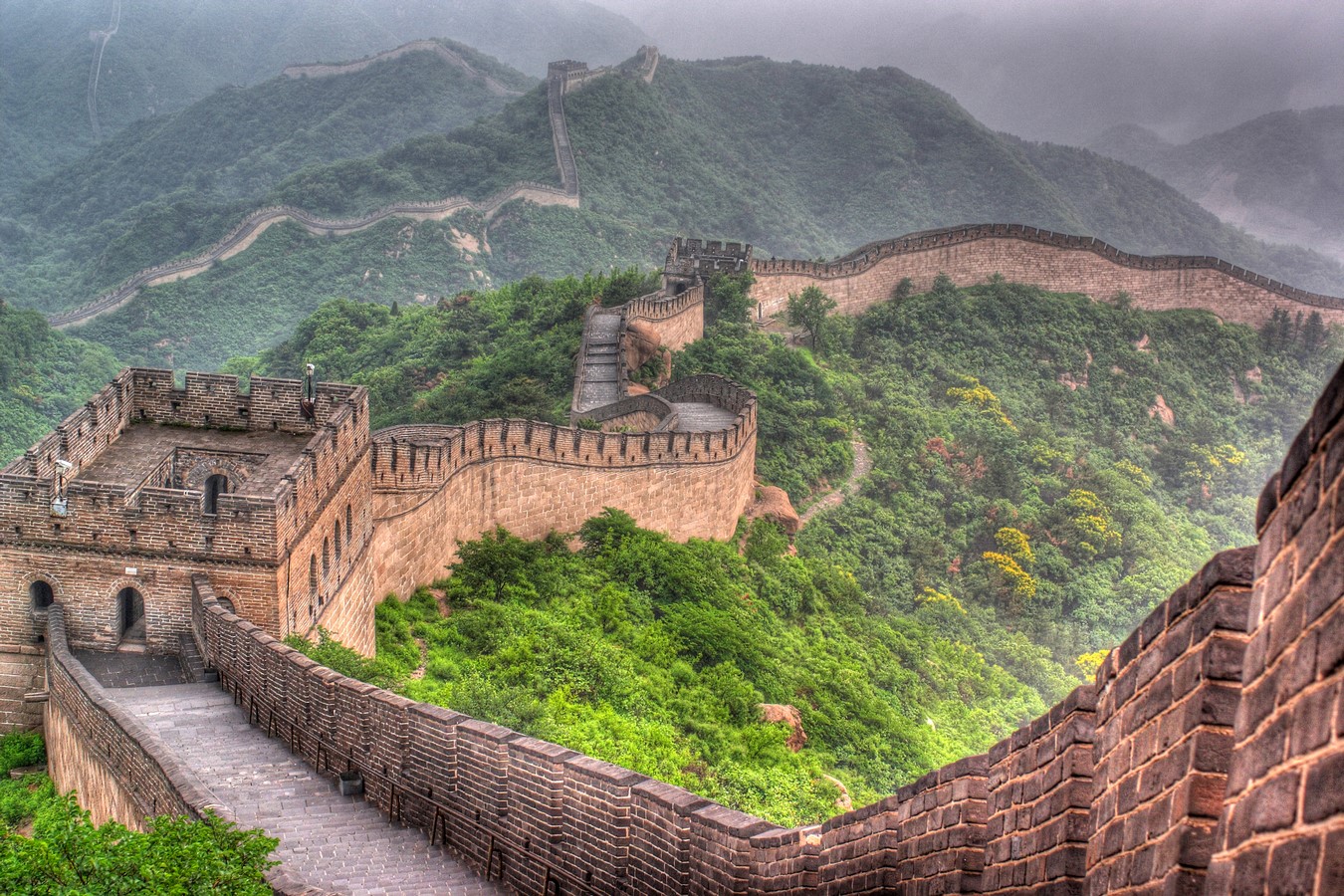
We all know about the Great Wall of China as one of the most celebrated human achievements and an architecture marvel and have dreamed of walking down it someday to appreciate the vastness and majestic views properly. Many stories about the great wall are spoken of, but only a few know about some shocking tales of the world’s most famous landmark. The most common myth about the Great Wall of China has been told to us from childhood, stating that it can be seen from outer space with a naked eye. You’ll be surprised to know that this, however, is not true. This was a false rumor that started in the 19th century to exaggerate the wall’s vastness and was believed with no proof insight. Another shocking revelation is that it is not made of a single wall. Many people often imagine the great wall to be in a continuous line, 21,000 km long. It is made of a series of branched walls that are parallel, intersecting, and sometimes breaking to make way for rivers and streams. It is assumed to take about 18 months to walk on the entirety of the wall, with multiple Starbucks on the way for people aiming high. The Great Wall is built over a span of 22 centuries and under the rule of over seven Chinese dynasties. It is an example of powerful construction and has not undergone any major restoration since 1644.

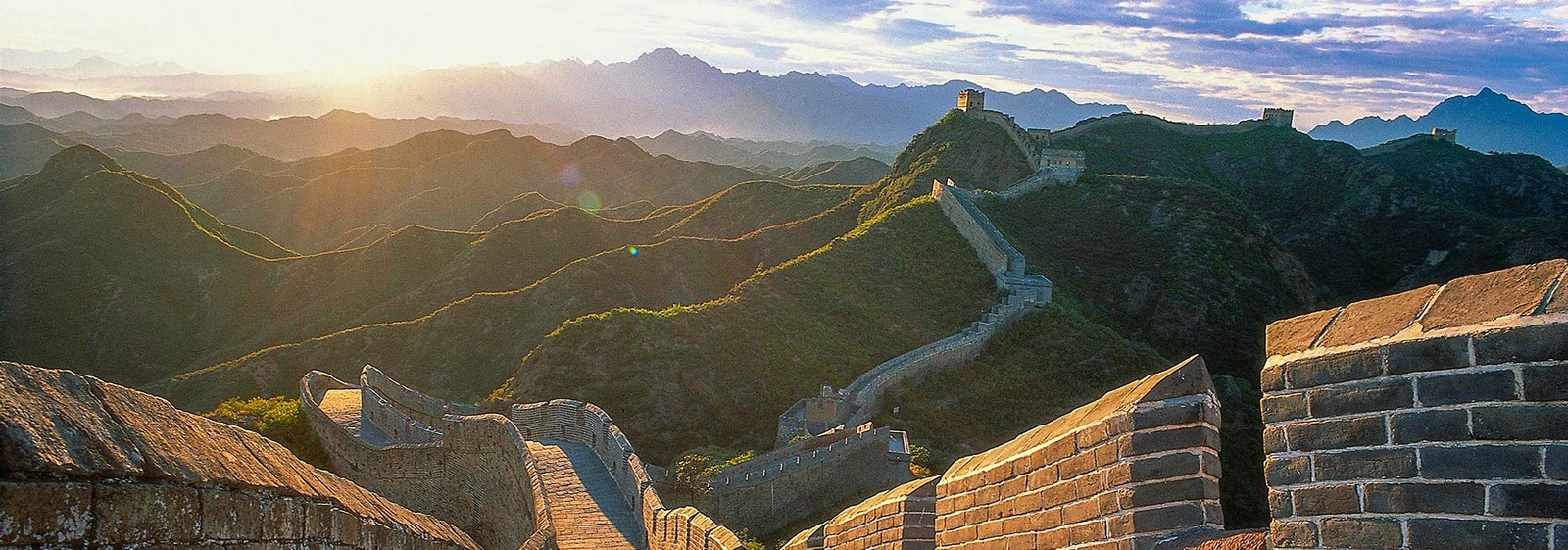
Stretching across 15 regions in north China, there are still many parts of the wall that haven’t been discovered yet, and it may be something even more massive than we perceive it to be.
3. El Castillo, Chichen Itza, Mexico | Architecture marvels

Chichen Itza, which translates to “at the mouth of the well of Itza,” is believed to be the largest Mayan city ever built. One of the city’s major attractions is the Pyramid at the center, also known as the El Castillo (the castle), or the temple of Kukulcan. This structure is an architecture marvel of ancient architecture that rises 24 meters and has four sides facing the cardinal directions, with 91 steps on each side with a serpent’s head at the base, to commemorate Kukulcan, the serpent deity. These steps, along with one at the top, add up to 365 steps, which denote the number of days in a year, and the four sides denote the seasons. A peculiar feature of the construction is that a shadow is created on the steps during the spring and summer equinoxes, which appears like a serpent slithering down the stairways. Other lesser-known features include the acoustic brilliance of the Pyramid. The entire city is known to exhibit strange sounds, but the most interesting one is heard when you clap your hands at the bottom of the steps on the four sides, and an echo is heard, which sounds like the chirps of a snake.
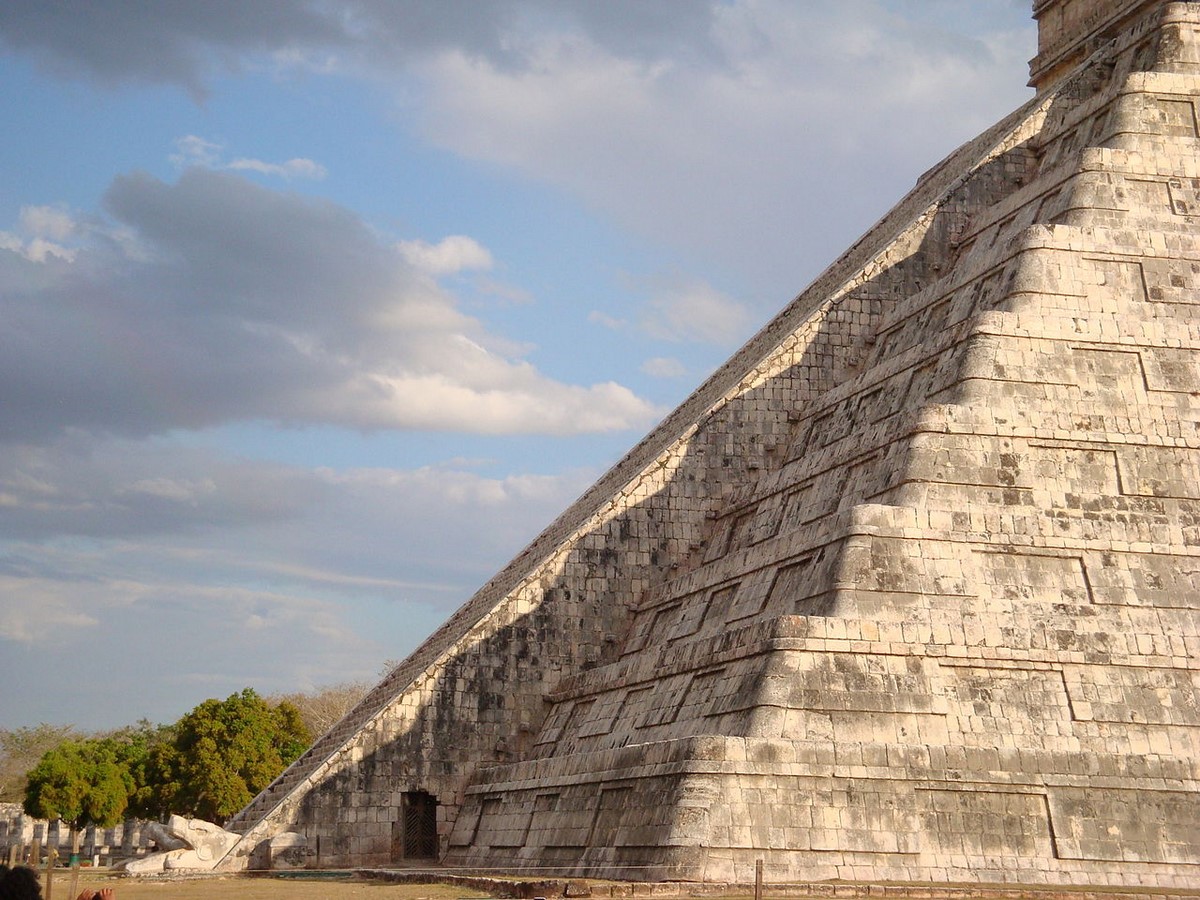

Is it a coincidence that the structure exhibits the sound and shadow of the very god that the pyramid honors? If not, then how was it made possible?
4. The Taj Mahal, India
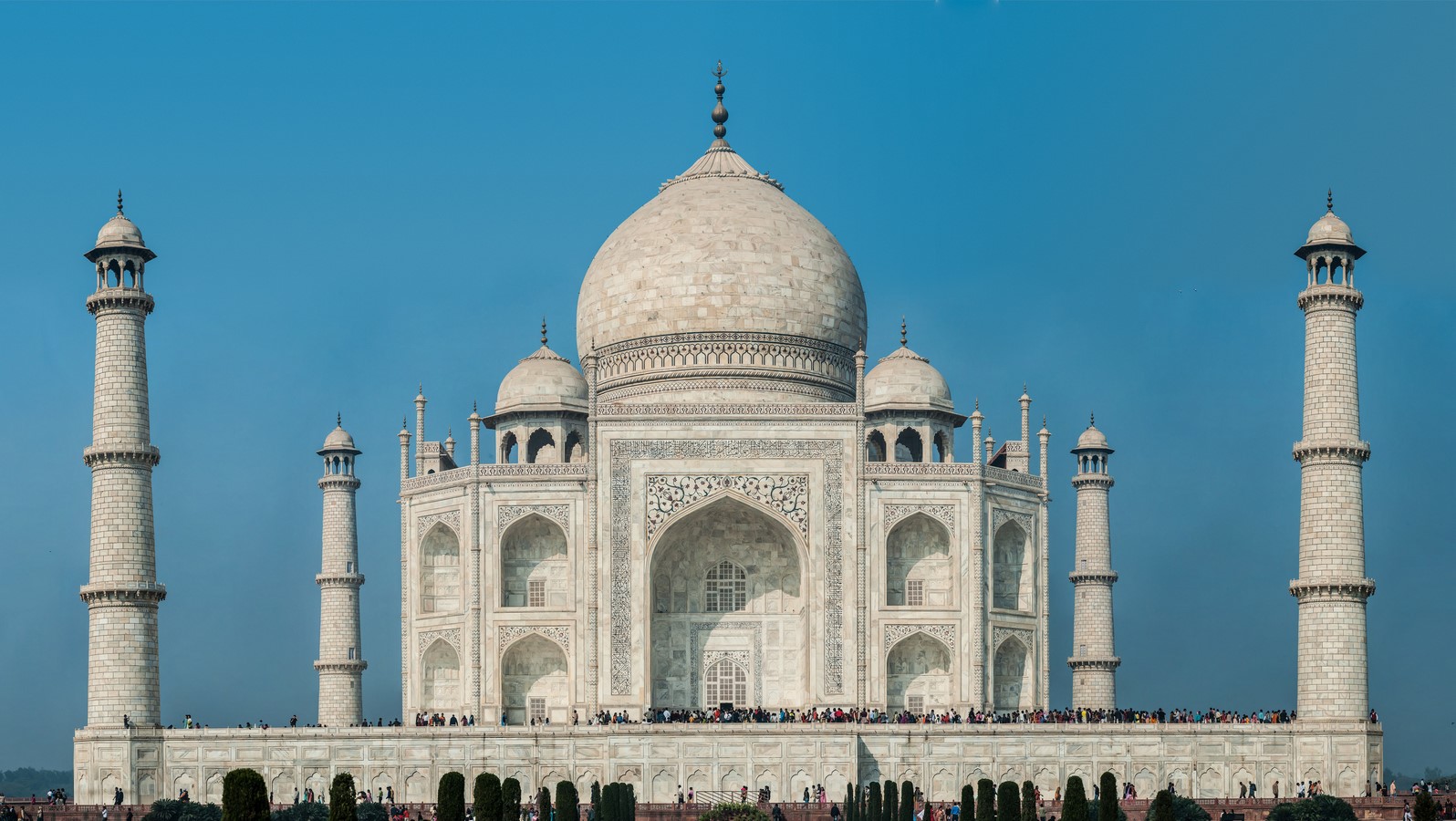
Many of us are familiar with the Taj Mahal and the many stories it harbors. It is one of the most beautiful buildings with a romantic history. It was built to honor Mumtaz Mahal, the favorite wife of Emperor Shah Jahan. Many famous tales about the mausoleum are within the knowledge of people in India, such as the reason behind the tilt of the minarets, the variation in the plinth height, and the trials of constructing such a massive monument. There are many, however, which are not commonly heard. One such mystery is the brilliant optical illusion created as you enter the door of the complex. The structure looks giant and closer than it is, and as you move forward, it keeps getting smaller, contrary to what one would imagine. This optical trick makes the iconic building seem magical when you visit. Another story is that there was a plan to construct another Taj Mahal, in black stone, as a tomb for Emperor Shah Jahan himself. It was supposed to be constructed on the opposite bank of the river, with a higher plinth to depict that he is looking over his beloved wife in the afterlife despite the contrast and distance.

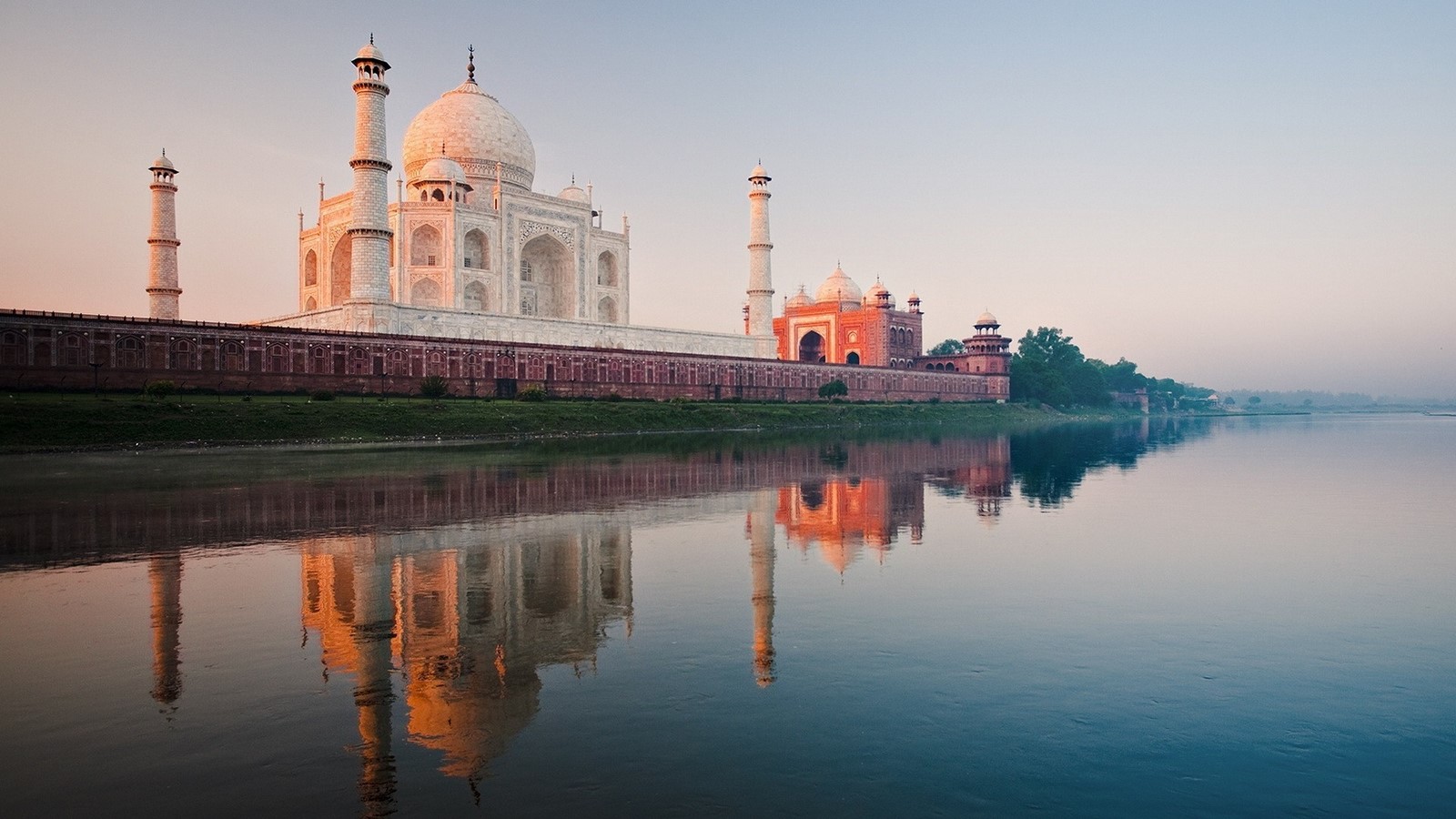
Even though it is relatively recent in the list of ancient buildings, The Taj Mahal is an embodiment of timeless love and grace, among many others of its kind.
5. Machu Picchu, Peru | Architecture marvels
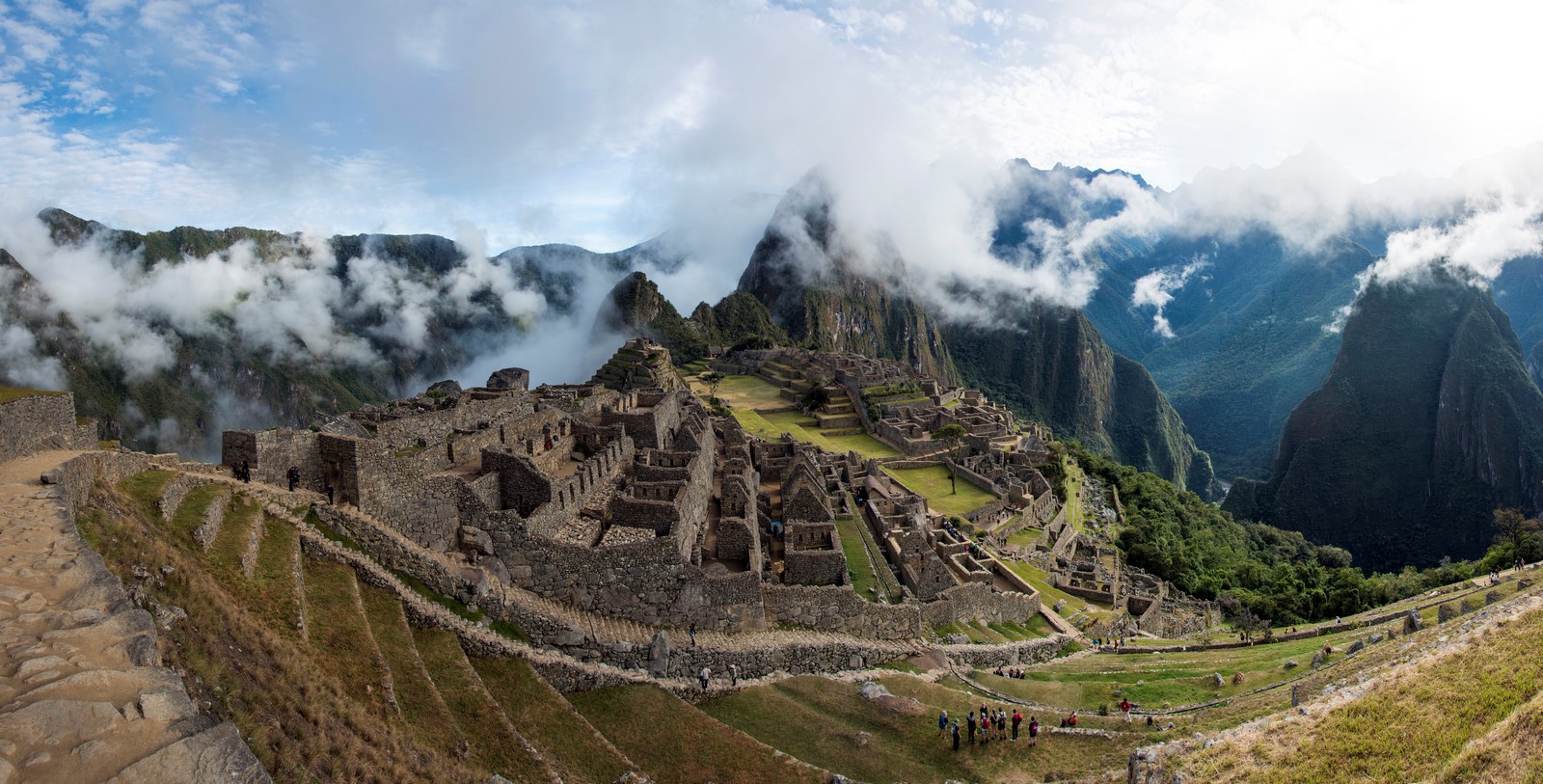
Machu Picchu is the famous lost city of Inca, which was voted as one of the World’s Seven Wonders. It was built in 1450 and abandoned for a hundred years after that. Much like the Sacsayhuaman (mentioned in the list below), Machu Picchu is a citadel built entirely out of dry-stone walls. The same speculations follow the construction of such walls and the transportation of massive rocks up the steep mountainside. There are several facts about the infamous wonder of the world, which are unknown to many. Machu Picchu is not the hidden capital of Inca that the explorers were looking for. They stumbled upon the site and named it the lost Inca city instead of the original capital city, Vilcabamba. Another interesting fact about the construction of the town is that it is built on two fault lines. The stone foundations of the town are unstable and reputed to dance during a seismic event and fall back into the rightful place after that. It is the construction on top that protects the faulty foundation during earthquakes. The city’s structure defies the role of foundations to be the source of strength for the building.
Is the “dancing of foundation stones” a coincidence in the city’s construction, or does it indicate advanced engineering excellence used in prehistoric times?
6. The Colosseum, Italy
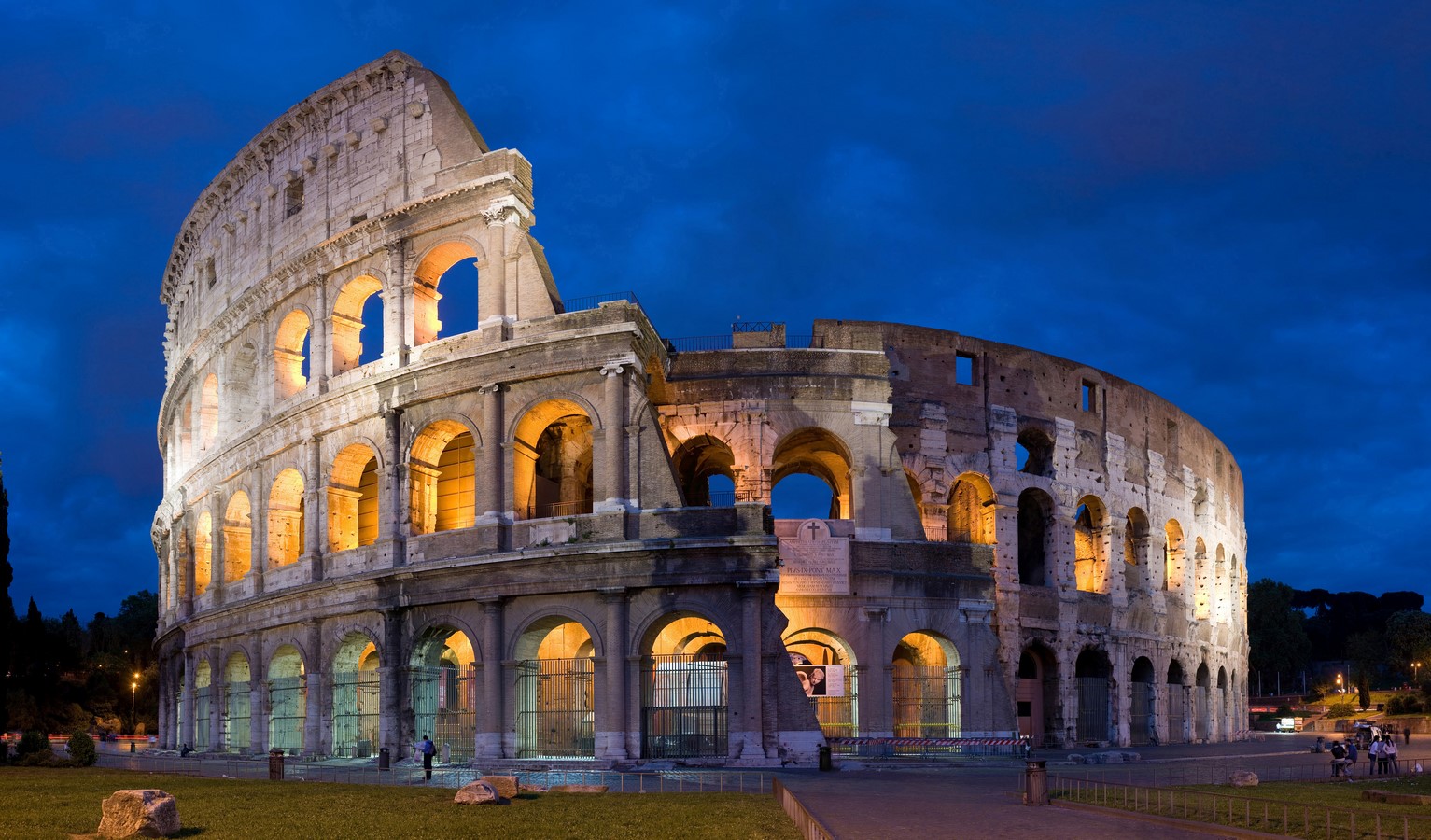
No list of infamous ancient architecture buildings is complete without the mention of the Colosseum. As one of the world’s most famous tourist places, Colosseum is known for somewhat different reasons than others. The massive oval amphitheater is the largest of its kind in the whole world (capable of hosting 50,000 to 80,000 people at once) and is a fine example of Classic Roman Architecture. The construction started back in 70 AD under the rule of multiple roman emperors. It was initially built as a four-story elliptical building with a base area of 24,000 square meters and a height of 49 meters. Needless to say, it was a place of ferocious public interactions in its prime and hosted many mock battles and animal hunts. However, the Colosseum is more famous for its tragic end than its glorious past. The Colosseum for one has undergone a lot of damage and subsequent changes. The building’s initial purpose was to serve as an amphitheater, post the fire it transformed into a chapel, then a cemetery, a workshop, wool factory to finally settling as a place of tourist attraction. The original building had 80 entrances, 76 were used for the public, and the other four were located at the four-cardinal point. North and South gates were used for important guests, and the other two gates were for the gladiators and were named the gate of Life and Death. The Gate of Life (east gate) was used for the participants’ entrance, and the Gate of Death (west gate) was used to carry out the unfortunate gladiators after losing the match.

No building has undergone such trials and stood firm to date. The fire, earthquake, and attacks damaged the south side of the structure, but the north side remains unfazed by all calamities, standing the test of time and emerging as the pride of Roman Architecture.
7. The Ancient city of Petra, South Jordan

The City of Petra stands as a cultural phenomenon today because of its stunning craftsmanship and many stories buried in its caves. Also known as the Rose City because of the color of the stone it is carved out of; Petra is as mysterious as it is beautiful. It is believed to be established in 312 BC, making it one of the world’s oldest cities. The Al-Khazneh is one of the examples of architecture marvel of ancient architecture and the most intricately carved temples in Petra and was recently added to the World’s Seven Wonders. There are many things which are still unknown to the world when it comes to the city. While many believe that a part of Petra was a monastery, it might have been a church. There are many carvings inside the main hall which symbolize the existence of a catholic place of worship. There is also archaeological evidence that the city used to be a green oasis once. It was articulated with ponds and greenery where water was brought in via pipes, all this in the middle of a Desert.

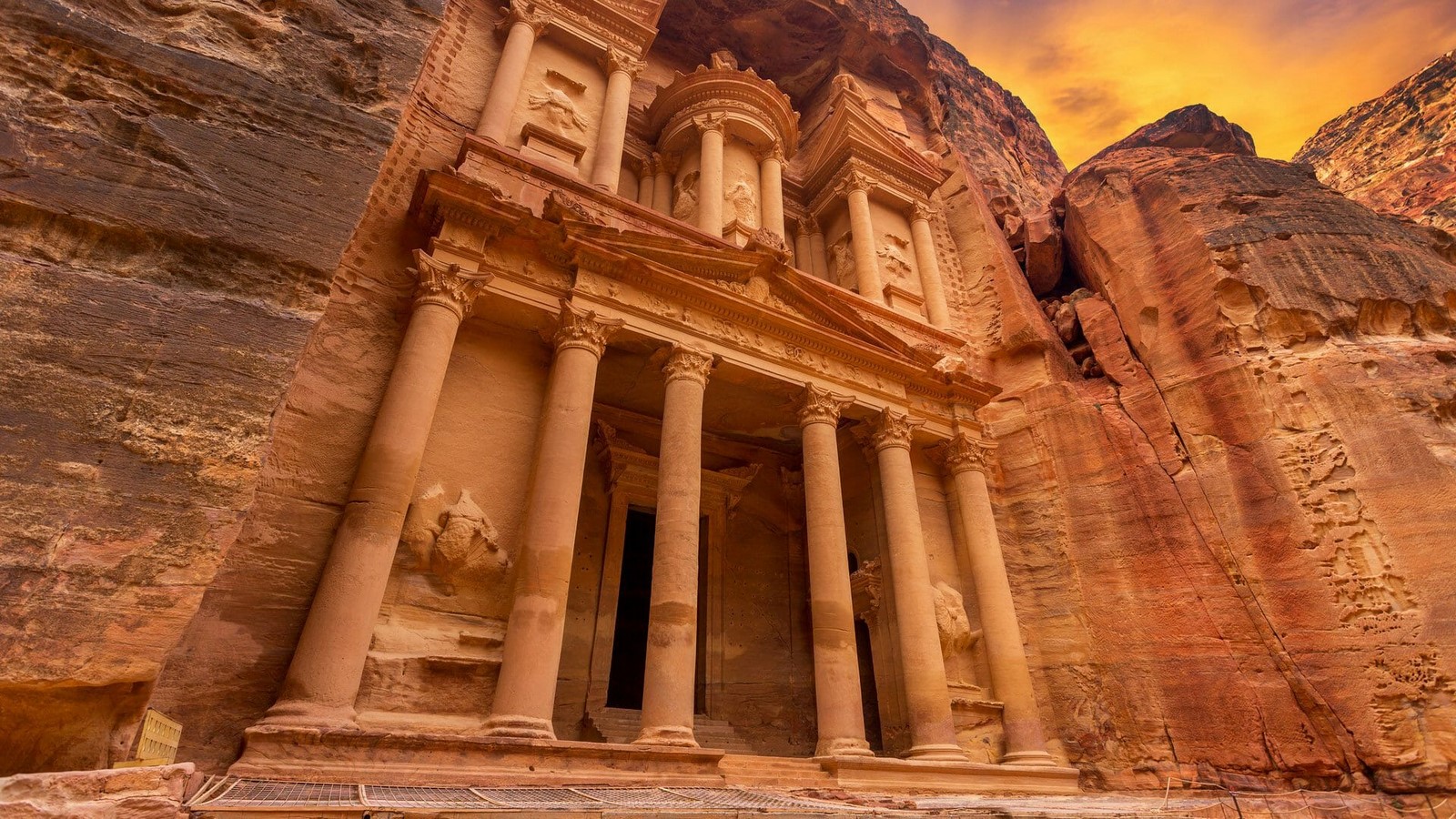
The city is very well hidden by the mountains in the Desert and hasn’t been fully explored yet. There are people constantly searching through the carved rocks of Petra and uncovering the many secrets.
8. Pont Du Gard, Roman Aqueducts, France | Architecture marvels

The Roman Aqueducts are, without a doubt, an example of architecture marvels of great ancient architecture and engineering feat by the Romans. In the whole system, The Pont Du Gard is the highest and most visited monument in France. The structure showcases technical prowess with its extraordinary scale, a stretch of 274 meters in length, and 49 meters in height. It is the only example of a three-story bridge today, with six arches at the bottom, 11 in the middle, and 35 at the top. It might not be clear at first glance, but the structure’s immense scale is difficult to design and execute even today. It was constructed during pre-historic times, without mortar, with sheer expertise in stone carving and superior talent for engineering. The stones, some of which are about 6 tons heavy, were precisely cut to fit each other. To talk in terms of numbers for better clarity, the lower row has arches of height 22 m and has an opening of 25 meters. It aided in providing approximately 2,00,000 cubic meters without technical pumping systems, purely driven by gravity.

The Roman Aqueducts are unusual in terms of scale and conservation. Pont du Gard is an artistic masterpiece and a brilliant example of Roman Architecture and Engineering.
9. Sacsayhuaman, Peru
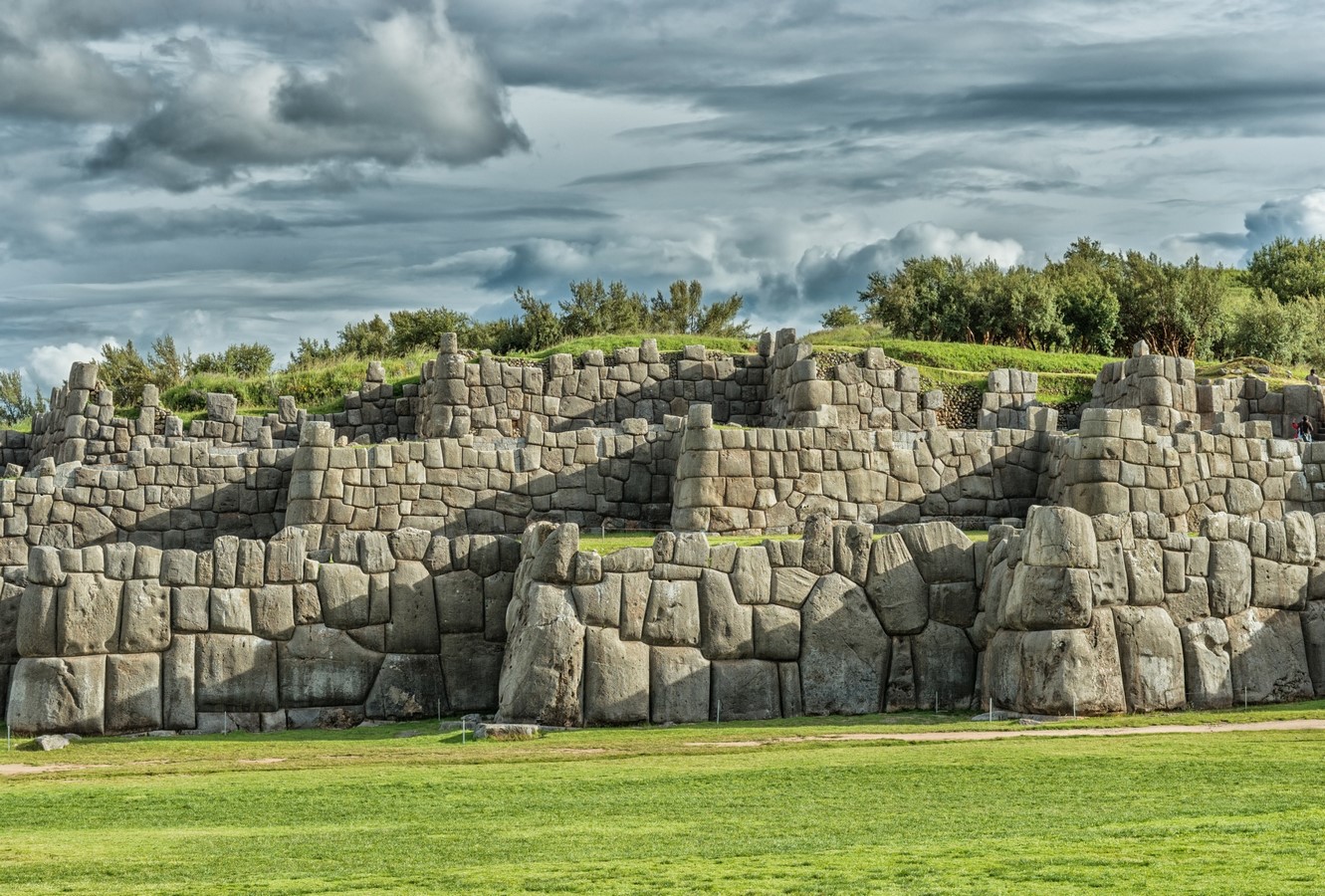
Sacsayhuaman is a citadel located on the northern outskirts of Peru. They have gained much recognition over the past years due to their undulating and precise wall structure, a mystery among many archaeologists. The complex is located on a steep hill and is surrounded by drywalls that are constructed with neatly cut stone blocks and tightly fixed together without mortar use. Some of these stones weigh 200 tonnes, and it is a mystery as to how they achieved such precision while constructing with large rocks. The rocks are so intricately fixed together that no blade or paper can pass through the joints. The variety of interlocking shapes that have been created on the zig-zag walls has puzzled scientists from all around the world. People have thus come up with a theory of how it would have been made possible. The most plausible one is the involvement of wooden stencils to outline a group of stones’ centerpiece to achieve accurate shape and size.
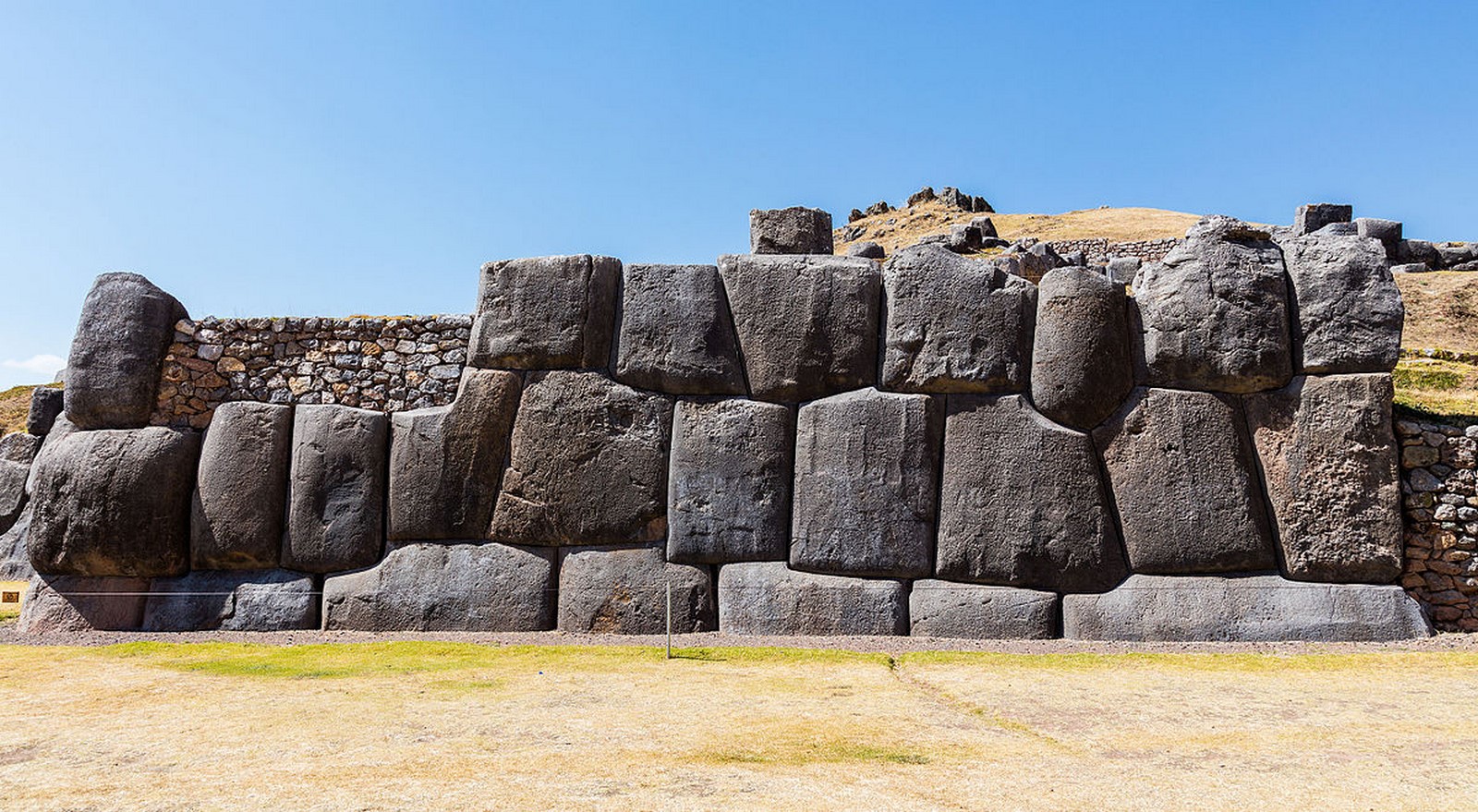
However, this has not been proven, and there may be a more significant way in which the megalithic walls were erected due to the widespread understanding of nature during the Inca Empire.
10. Leshan Giant Buddha, China | Architecture marvels
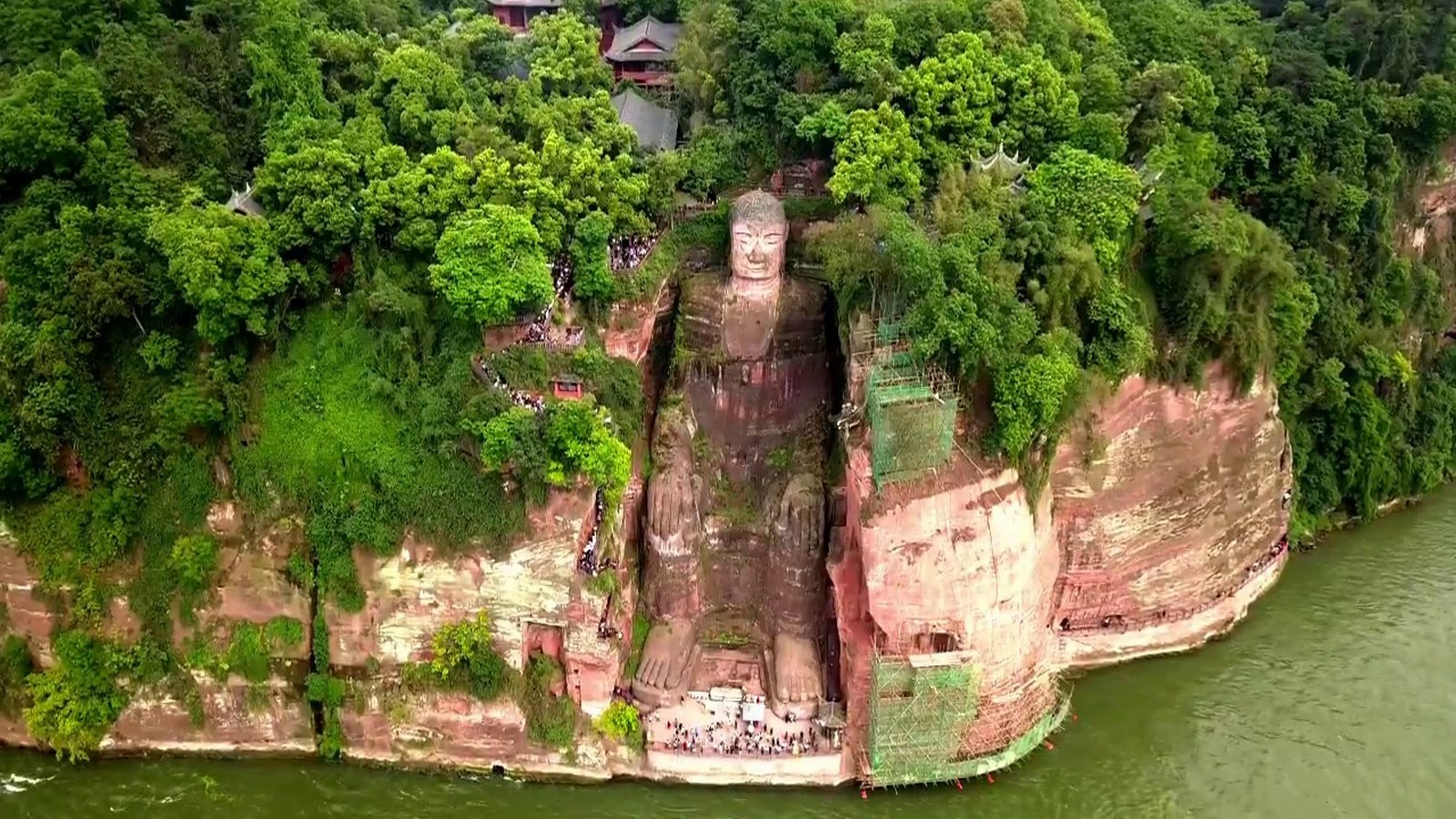
The Leshan Giant Buddha is a tall stone statue of Buddha rising 71-meter-high. It is the tallest stone statue of Buddha in the whole world, carved out of a cliff face of red sandstone. The monument is famous for its scale and beauty, but people often don’t know why the construction and its effect on the surrounding areas. It is sited at the junction of the Min River, Dadu River, and Qingyi River in China. The three rivers came together at this particular point near the cliff and resulted in high tidal pressure in the waters. The ships and vessels traveling through were often destroyed, and many lives were lost due to nature’s rebellion. That’s when a Chinese monk decided to persuade people to construct a Buddha statue at the edge of the cliff to calm the turbulent waters. This was a mythological belief when the construction of the statue started with no proof if it would aid in reducing the turbulence. Shockingly, the water began to calm down post-construction of the enormous statue.
Many believe that the sedimentation of rock pieces that fell into the sea was the cause of such a change. However, there are still some people who strongly believe in the mythological effects of the statue of Buddha and his blessing on the inhabitants.
References:
https://themysteriousworld.com/top-10-greatest-architectural-wonders-of-ancient-world/
https://www.readersdigest.ca/travel/world/10-architectural-wonders-ancient-world/
https://www.popularmechanics.com/technology/infrastructure/g2606/most-impressive-ancient-builds/
https://www.architecturaldigest.in/content/astonishing-facts-7-wonders-world/amp/
https://hiddenincatours.com/great-pyramid-of-giza-why-does-it-have-8-sides-not-4/
https://curiosmos.com/the-great-pyramid-of-giza-is-the-only-known-eight-sided-pyramid-in-existence/
https://www.thetravel.com/chichen-itza-seven-wonders-facts-trivia/
https://www.britannica.com/place/Chichen-Itza
https://www.storiesbysoumya.com/facts-about-chichen-itza/
https://www.tourmyindia.com/blog/interesting-facts-about-taj-mahal/
https://www.scoopwhoop.com/inothernews/lesser-known-taj-facts/
https://metrosaga.com/facts-about-the-great-wall-of-china/
https://visitworldheritage.com/en/eu/uncovering-pont-du-gards-archaeological-secrets/736bc7fc-65ec-4ec3-84ea-a5238e360ada
https://learnodo-newtonic.com/pont-du-gard-facts
https://theorangebackpack.nl/en/jordan/the-10-most-interesting-facts-about-the-ancient-petra/
https://www.worldweatheronline.com/blog/2016/07/15/the-mystery-of-ancient-city-petra/
https://en.wikipedia.org/wiki/Sacsayhuam%C3%A1n
https://www.ancient-origins.net/ancient-places-americas/unravelling-mystery-behind-megalithic-stone-walls-saksaywaman-001470
https://www.chinadiscovery.com/sichuan/leshan/leshan-giant-buddha.html#:~:text=Fact%201%3A%20Largest%20Stone%20Buddha&text=Standing%2071%20meters%20tall%2C%20Da,skillfully%20embedded%20in%20the%20head.
https://en.wikipedia.org/wiki/Leshan_Giant_Buddha
https://www.thetravel.com/little-known-things-about-the-great-wall-of-china/
https://en.wikipedia.org/wiki/Colosseum
https://www.escapehere.com/destination/10-little-known-cool-facts-about-machu-picchu/


